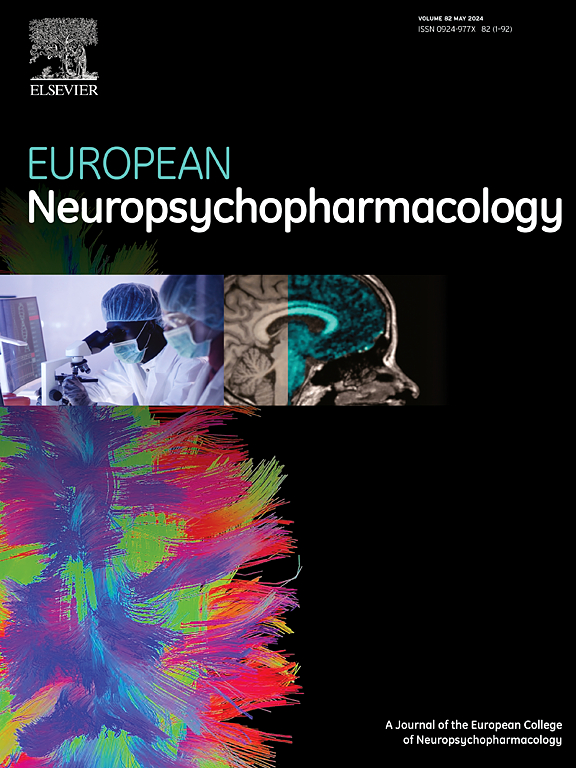Comparing PANSS-6 and PANSS-30 for clinical and functional outcomes in first-episode psychosis: A 2-year follow-up in a Spanish cohort
IF 6.1
2区 医学
Q1 CLINICAL NEUROLOGY
引用次数: 0
Abstract
Assessing clinical symptoms in First Episode Psychosis (FEP) is essential for guiding treatment decisions and predicting outcomes. The Positive and Negative Syndrome Scale (PANSS-30) is widely used for this purpose; however, its length limits feasibility in routine clinical practice. The PANSS-6, a shorter version, represents a promising alternative, though its performance in FEP populations remains underexplored. This study evaluated the predictive abilities of PANSS-30 and PANSS-6 for clinical remission, functional remission, and relapse over a 2-year follow-up in a Spanish cohort of 193 FEP patients. Data were derived from the PEPs Project, with PANSS-30 assessments conducted at baseline and at 2, 6, 12, and 24 months; PANSS-6 scores were calculated from PANSS-30 at the same visits. Clinical remission, functional remission, and relapse were defined using established criteria. Logistic regression and ROC-AUC analyses assessed predictive and discriminatory performance. Agreement between the Remission in Schizophrenia Working Group (RSWG) for PANSS-30 and PANSS-6 remission criteria was near-perfect at 1 and 2 years (κ ≥ 0.98). PANSS-6 demonstrated stronger predictive associations and similar discriminatory performance to PANSS-30 for clinical and functional remission, while its performance for relapse over two years was similar. In conclusion, the PANSS-6 is a reliable and efficient tool for assessing clinical outcomes in FEP, offering similar predictive accuracy to PANSS-30 while being more practical for routine use due to its shorter administration time.
求助全文
约1分钟内获得全文
求助全文
来源期刊

European Neuropsychopharmacology
医学-精神病学
CiteScore
10.30
自引率
5.40%
发文量
730
审稿时长
41 days
期刊介绍:
European Neuropsychopharmacology is the official publication of the European College of Neuropsychopharmacology (ECNP). In accordance with the mission of the College, the journal focuses on clinical and basic science contributions that advance our understanding of brain function and human behaviour and enable translation into improved treatments and enhanced public health impact in psychiatry. Recent years have been characterized by exciting advances in basic knowledge and available experimental techniques in neuroscience and genomics. However, clinical translation of these findings has not been as rapid. The journal aims to narrow this gap by promoting findings that are expected to have a major impact on both our understanding of the biological bases of mental disorders and the development and improvement of treatments, ideally paving the way for prevention and recovery.
 求助内容:
求助内容: 应助结果提醒方式:
应助结果提醒方式:


